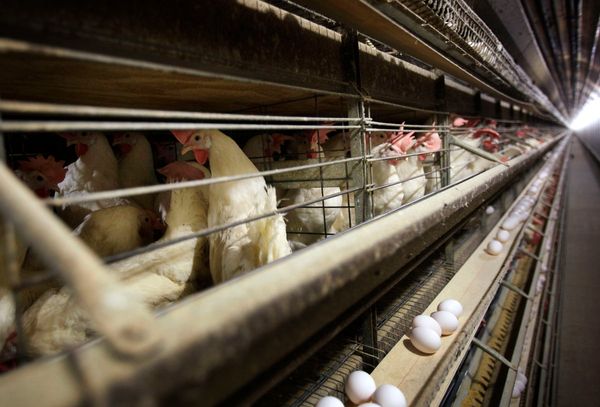
The Federal Reserve may not be finished with its rate-hike cycle, interest rate trading data indicated Thursday, after a series of readings suggested the U.S. economy continues to expand despite elevated inflation and the lingering effects of the regional-banking crisis.
The Commerce Department's second estimate of U.S. GDP growth showed the economy expanding at a 1.3% clip over the first three months of the year.
The pace exceeded the agency's initial estimate of a 1.1% advance and was powered largely by better-than-expected consumer spending.
Don't Miss: Debt-Ceiling Drama Is Political Theater, Not an Existential Crisis
At the same time, a more detailed reading of inflation pressures showed that core consumer prices rose at a 5% pace over the period, a faster-than-expected reading. The result underscored the Fed's recent warnings that more near-term rate hikes might be needed to quell persistent inflation.
A separate report from the Labor Department, meanwhile, showed that weekly applications for new unemployment benefits rose only modestly, to 229,000, for the period ended May 20. The previous week's tally was revised lower by 17,000.
"The economy continues to defy all the doubters’ expectations," said Chris Zaccarelli, chief investment officer for Independent Advisor Alliance in Charlotte. "The job market remains strong with jobless claims less than expected, GDP for the first quarter was revised higher, and personal consumption was revised higher as well.
Good News Is Bad News?
"To the extent that good (economic) news is bad (market) news, the strength in the economy and the persistence of inflation, it is likely that the Fed keeps rates higher for longer," he added. "The fact that the market is pricing in rate cuts for later this year seems more unlikely by the day."
Market reaction was muted, with benchmark 2-year-note yield marked 2 basis points higher at 4.427% in Thursday trading, while 10-year notes pegged at 3.763%.
Treasury bill yields, however, jumped following a U.S. credit-rating-downgrade warning from Fitch and a lack of specific progress from the talks in Washington. Paper maturing on June 1 -- the so-called X-date by which the Treasury will run out of money to service debts -- added 19 basis points to trade at 7.47%
The U.S. dollar index, which tracks the greenback against a basket of six global currencies, was marked 0.25% higher in overnight trading at 104.154, extending its six-week gain to around 3.1%.
Growth prospects remain solid as well, despite a series of regional-bank failures in March and the impact they have had on broader loan-market and credit conditions.
The Atlanta Fed's GDPNow forecasting tool indicates the economy is growing at a 2.9% pace, carrying momentum from the first quarter into the three months ending in June.
But Bill Adams, chief economist for Comerica Bank in Dallas, questions the level of strength the economy could carry into the summer months. He forecasts a pullback in real GDP growth for the second quarter.
"The economic indicators that are closest to real-time suggest that the service sector and labor market are doing a bit better," he said. "But construction and manufacturing are contracting, money supply is contracting and credit conditions have tightened since March."
Fed Minutes Show Rate-Path Split
Minutes from the Fed's May policy meeting, published Wednesday, brushed aside market expectations of a late-year rate cut. But the report hinted that if the economy performs as expected, further increases might not be necessary.
That said, the minutes also noted that while officials "generally expressed uncertainty about how much more policy tightening may be appropriate," others were worried that "based on their expectations that progress in returning inflation to 2% could continue to be unacceptably slow, additional policy firming would likely be warranted at future meetings."
Thursday's data, which comes just ahead of Friday's April reading of the Fed's favored inflation gauge, the PCE Price Index, have nonetheless lifted bets on a June rate hike. But the data have not completely eliminated wagers on a December cut.
Don't Miss: Fed Minutes Show Powell Keeps Rate-Hike Options Open
"Once again, weekly jobless claims and upwardly revised previous prints point to a labor market that has and continued to be much tighter than previously anticipated," said Mike Loewengart, head of model portfolio construction at Morgan Stanley Global Investment Office.
"Paired with stronger than expected Q1 GDP, it’s become clear the fight to slow inflation is going to be a long one, and that 'higher for longer' remains the outlook for rates," he added.
CME Group's FedWatch now indicates a 41.2% chance of another 25-basis-point, or 0.25 percentage point, rate hike in June, down from 35.6% last week. But the gauge is pricing in a 66% chance of a July hike, nearly double last week's odds.
Traders are also betting, however, that the Fed will need to lower rates by the end of the year, largely on the back of concerns for a second-half recession, with the bulk of expectations pointing to a federal-funds rate between 4.75% and 5%.
Memorial Day Savings! Unlock trusted portfolio guidance for a fraction of the price. Subscribe now.







